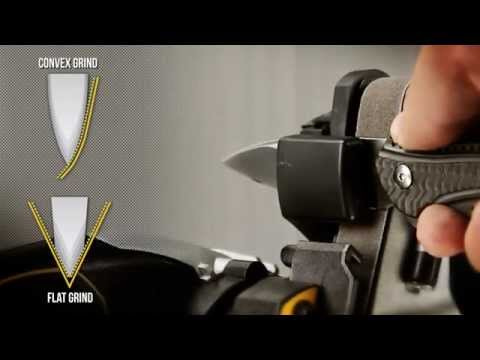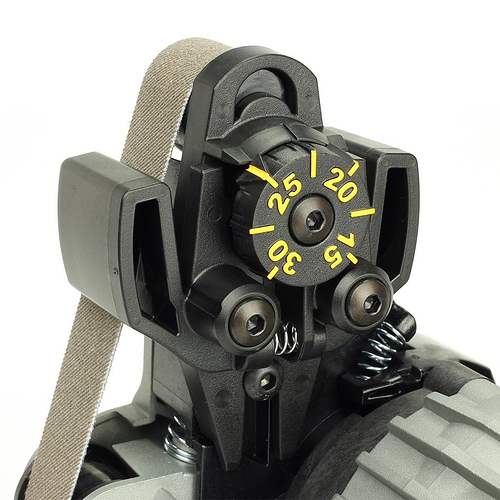My colleague has some fabric scissors she’s requested I sharpen, but I won’t do that until I’ve practiced a bit. I don’t want to mess up expensive stuff.
I have that bread knife and spatula he used, all CI recommendations (and spot on at that - not that I know anything about bread knives other than all the others I tried didn’t cut worth shit).
I also went with their recommended crazy over the top Chef’sChoice 15XV Trizor thingy. The downside is those 15 degree angles don’t hold their edge long. The upside is it’s fast and easy to resharpen everything so I usually but not always keep everything pretty sharp. Never had anybody use my el cheapo Victorinox and not comment on getting one for themselves.
Had to laugh at the arm hair test, that’s what I was taught as well.
Great, just read this and now I want a Kramer knife. Mine certainly aren’t that sharp, at least depending on the hyperbole levels.
I would often get asked about bald patches on my forearm in college and at work. There is even a nickname for it that I read in an Elmore Leonard book. ‘Knife fighter’s mange.’
What did you actually get (I mean what specific sharpener)?
I have the Victorinox bread knife. I’d give it about a 7, maybe an 8. It’s sharp and works well on bread and other tough exterior things. I hold the following test on bread knives though. If it can cut a pastry or croissant without tearing it all over, it’s a keeper. My other Victorinox I mostly adore, with the Chefs and boning really standing out. The paring knives aren’t my faves, I use a Wusthof instead.
That Chef’s Choice is nice, it’s wheel based from what I understand and lasts a long time. That’s one of the early ones I -should- have gotten. The Work Sharp is pretty quick too, though. I’m happy with it. It’s hard to assess the sharpness with just a slice of paper, so I’ll sometimes see if it will shave my forearm, and at other times I’ll try a tomato skin and see how much pressure it takes to break it. Another tip I’ve seen was to slowly pull a blade across the top of a fingernail without tension on it (just knife weight.) It will create a very small spot on the top of your fingernail, but it’s just fine enough of a shallow that the micro-edge on your knife will then draw along it. As you slowly pull across you’ll feel rough or snagged spots on the blade, and you can go back and sharpen those spot just a little more.
I don’t own any carbon steel knives but apparently those approach superb sharpness due to their hardness, and hold it for quite some time. I imagine someone doing all day work with a knife (like claybob in the past) would appreciate those a ton more than I would, but damn if those knives aren’t pretty.
Both the pairing knife and bread knife were pointed out as being good splurge points so I got the Wusthof for both and have been pretty happy with them. The rest are Victorinox and work well.
Wish I had gone that route with my bread knife.
That’s hilarious, I love it falling under the Amazon category of “Lawnmower Accessories.”
I’ve been eyeing the Worksharp myself. I have a KME sharpener that I really like, but there are some neat accessories for the Worksharp if you feel the need to expand its capabilities.
I have a friend with an Edge Pro Apex which is similar. I’ve used it a few times. While it can put a mirror edge on a blade, it takes quite a while. It’s also a bit of a pain to set up, switch stones out, etc. I would compare them similarly on what you can do to an edge, but geometrically, the edge from KME and Edge Pro, etc look like a full stone ground edge, with a perfect V shape. Belt systems, including the Work Sharp, form an edge that is more of a convex edge. Of course, Work Sharp pitches this as a plus, but note that what it is, is a V with a little bit of a broad shoulder. Supposedly this adds life to the edge, but I’m assuming this wouldn’t be great for extremely narrow edges, like a straight razor.
So I would equate them as such:
Setup of the edge pro takes a few minutes, soaking the stones takes a few minutes, swapping out the stones can take a minute or two, getting the blade just right on the guide can take a minute or two, doing multiple passes to get a burr can take a bit, etc. It takes a wile.
Belt swapping on the Work Sharp takes seconds. Pulling blades through a rough grit can put a burr on the edge within 3-7 pulls. Since the recommendation is generally to pull for one inch per second, even multiple pulls take hardly any time. So I had a blade done, paper cutting sharp and in some cases even honed with the fine belt to a mirror finish, within a very short amount of time.
I can understand the use for both types of systems, but the belt type is a better match for me and my time. It even offers the grinding attachment you mentioned, which I look forward to getting and trying at some point.
Angle difference between stones only and belts (belts are the convex mentioned on top):

That belt sharpener looks pretty slick, I might pick one up.
One thing to be aware of though, is that the guide it has is for a 20 degree edge (40 total) which is good for my knives, which are an old set of J.A. Henkel 5 stars from like 20 years ago.
But if folks have Wusthofs, they have a 14 degree angle, so using that guide wouldn’t be ideal for them.
There are two models, the Work Sharp, and the Work Sharp Ken Onion Edition. I got the latter. It allows free setting the angle, and the knob goes a little above 30 and a little below 15, which would cover it. But both models also allow you to remove the guide entirely, and freehand pull the blade at any angle needed. And that latter method is really common for folks with custom knives that want to change things up.
Also, I’d just set 15 degrees and be done with it. Reprofiling a blade angle with this tool is a cinch. Then you’d have it set to redo that multiple times. It is exactly how I set my two Wusthofs.
I use the KME primarily for pocket/folding knives, while using paddle-style strops loaded with a CBN liquid for my convex knives. I really enjoy the act of sharpening by hand, but the WorkSharp appeals to me because of the speed and the blade grinding attachment. Though I wonder if I would be better served by getting a larger belt grinder.
I prefer a hard Arkansas stone and oil, but I must say I like the idea of a Work Sharp.
I have a diamond whetstone that I’m fairly certain I use approximately correctly, and a weird Chinese stone of some sort that my mother gave me that I have no idea what it is. They seem to do the job acceptably well, although I do try to get my knives professionally sharpened from time to time to fix any stupid problems I may have introduced.
I finally learned how to sharpen knives and I was using dull knives my entire life.
I was looking for that Hougan post about sharpening knives as a kid but I couldn’t find it.
Now I can easily glide through vegetables (as opposed to pushing). Cutting through paper was a pretty clean line. It’s not quite razor sharp, but it’s good for tomatoes skins and the such.
I geeked out a bit after watching a whetstone video and bought a bunch of separate whetstones 800, 1000, 4000. The 4000 grit may be too fine, the step between 1000 and 4000 is taking too long. But I already spent so much and these things are heavy and take up space.
Also I got a stone for flattening stones which seems like a dumb buy, apparently you only would need that if you’re a pro sharpening hundreds of knifes a week.
Eh, I’m a bit smarter now than I was back then. Main point: backstroking a blade is actually perfectly fine and theoretically superior. Working down the grits and whatnot is still solid advice, holding the same angle is always a great thing. What I’ve learned over the last few years getting into woodworking and chisels and planes is that angle Uber Alles. Perfect angle means durability of sharpness. You can take a blade at a whatever angle and hit it against a fine stone at a slightly sharper angle and have a shaver, but it won’t last.
Where I’m at now is back bevels. You hit the blade on the hard stuff at, say, 18 degrees and burn off that material, then you sharpen it at 20 degrees, that gives you a tiny amount of material to remove on subsequent sharpenings until you get back to that back bevel. Then reset and start again. And of course hone too. I’m still half a fan of the big ceramic stick that does both, fantastic for a five second sharpen but you’re not going to be perfect so it will round eventually.
I want to sharpen my knives so I have been watching videos. Kenji Lopez-Alt did a video with the guy who makes Kan knives and they were saying don’t hone knives made out of hard metal (Japanese knives), because it can damage them. Which is surprising because I have been doing it for years with my Shun.
They said if you do use one, don’t apply pressure.
Honing knives is bending knives. Two things happen to your tiny little sharp edge. You use it, acids eat at it, the cutting board abrades it, etc. etc. You remove material. Now you have to sharpen, AKA remove material to restore that edge. The other thing is that tiny little edge is susceptible to bending over, that’s what honing is for. You can’t hone a knife that has lost material, but you can sharpen a knife that needs honing, it just cuts more material than necessary. If you have a sharp edge then honing just straightens it up so it cuts.
More specifically, hardness equals brittleness. If you have a very hard knife edge then it will fracture microscopically as well as bend, as the pressure goes. Honing should be a very soft pressure, you’re moving a tiny bit of metal back into true, the worst thing is that you chip the metal and make a jaggy edge that cuts quite well but then fails later. For honing, same hardness makes sense, though if you’re back-stroking even softer steel should work fine because we’re applying force, not abrasion, so who cares? You could hone against wood, it would just take longer. A harder steel will take material so you are both honing and sharpening.
I still like my ceramics, bit of both at the same time.
